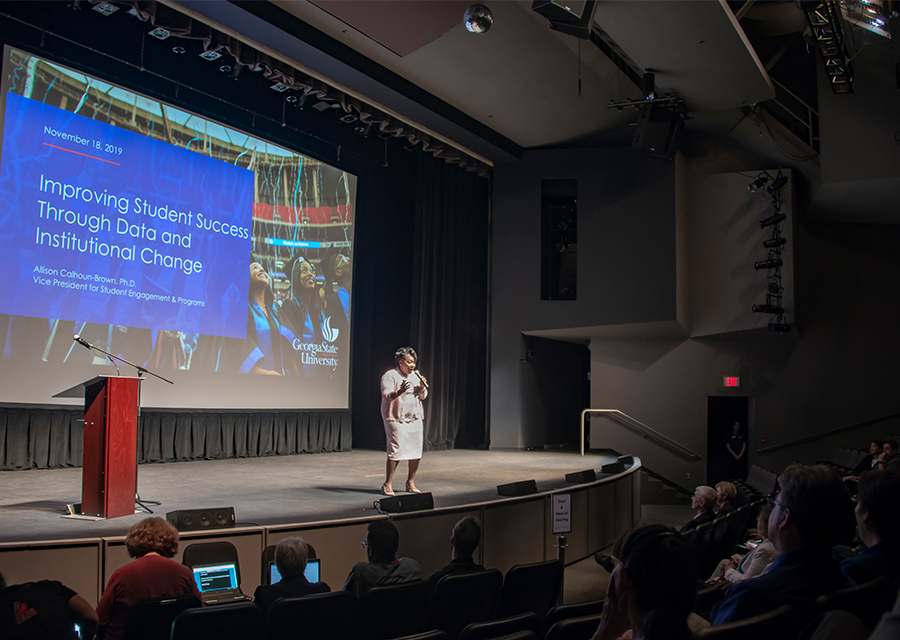Provost’s Student Success Series Highlights Innovative Student Engagement Strategies
As part of her ongoing Student Success lecture series, CSUN Provost and Vice President for Academic Affairs Mary Beth Walker invited Allison Calhoun-Brown, vice president for student engagement and programs at Georgia State University, to share with CSUN faculty and staff different strategies to encourage freshman enrollment, increase current student retention, and promote academic progression, graduation and diversity.
Before joining CSUN this past summer, Walker was interim president at Georgia Gwinnett College and associate provost for strategic initiatives and innovation at Georgia State.
Calhoun-Brown’s lecture, “From Collaboration to Application: Implementation Strategies in Support of Student Success,” was held Nov. 18 at the University Student Union’s Plaza del Sol Performance Hall. Calhoun-Brown shared how Georgia State is using data and predictive analytics (using existing statistics and trends to make predictions) to create and implement various initiatives that have helped them achieve one of the most rapidly increasing graduation rates in the nation, regardless of race, ethnicity or income.
To address obstacles in maximizing enrollment, Calhoun-Brown shared that Georgia State lowered the SAT score required for admission. These scores, she said, did not predict student success outcomes in college — and Georgia State saw no drop in students’ average GPA, even after lowering the SAT score requirement.
“All we did was change how we admit them and how we support them,” she said.
To support prospective students, Georgia State offers personalized interactions through an AI (artificial intelligence) chatbot that can answer questions 24/7, to guide potential students through complicated financial-aid forms and registration processes. Calhoun-Brown said her department found the chatbot was most active at 10 p.m., when staff would otherwise be unable to assist students — and in just three months, the chatbot processed more than 201,000 questions and answers.
Initiatives geared to support student retention are vital in maintaining the diversity at Georgia State, as students from ethnic minorities and low-income backgrounds tend to face additional obstacles to academic success, Calhoun-Brown said. These initiatives include cohorts for new students, where groups of 25 students enroll in the same classes for a semester; “meta-majors,” which place students in general areas of study (such as business or natural sciences), to reduce the pressure of choosing a specific major prematurely; and block scheduling, which helps avoid conflicting class schedules.



 experience
experience